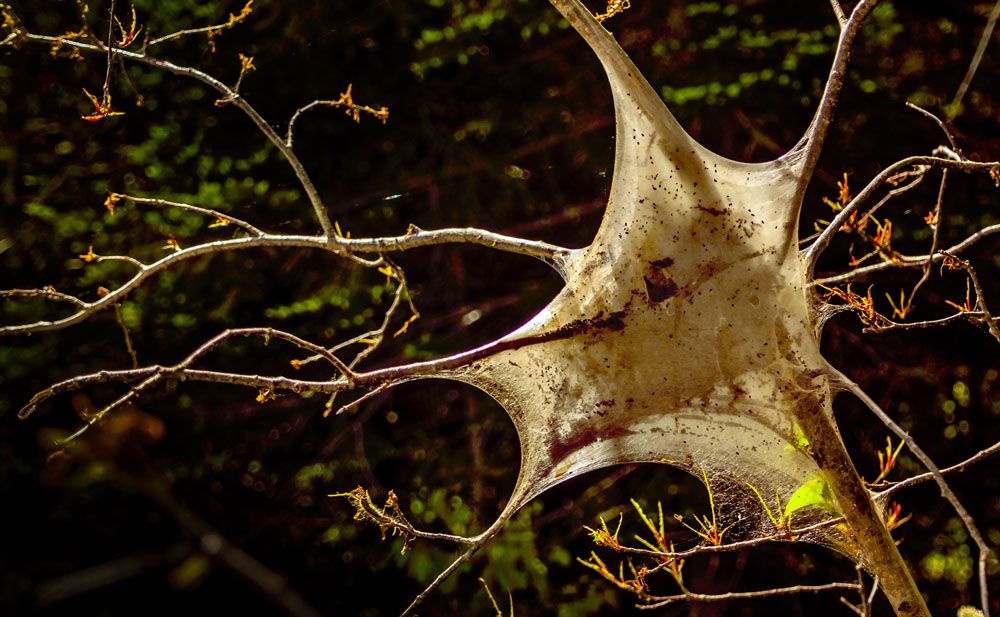
Southwestern Tent Caterpillar – Malacosoma incurvum
Southwestern Tent Caterpillar – Malacosoma incurvum
Common Name: Southwestern Tent Caterpillar
Latin Name: Malacosoma incurvum
Appearance:
The Southwestern Tent Caterpillar has specific characteristics throughout its life cycle. As a caterpillar, it has a muscular and hairy body with a variety of hues, including brown, black, and white. It changes into a cocoon during the pupal stage, and the adult moth has a more muted look with wingspans of up to 2 inches.
Host Plant:
This caterpillar is well-known for its relationship with a wide range of deciduous trees, including oak, cherry, and willow. It builds silk tents inside the branches of its host plants, which serve as both a shelter and a feeding site.
Territory:
The Southwestern Tent Caterpillar is most typically found in the southwestern areas of North America, where it thrives in warm and dry temperatures. It is found in a variety of habitats, including woodlands, orchards, and areas where its preferred host plants are abundant.
Damages caused by Southwestern Tent Caterpillar:
The larvae of the Southwestern Tent Caterpillar eat a lot and do a lot of damage to the leaves of host trees. Large outbreaks can cause trees to lose their leaves, which can hurt their health and possibly cause long-term ecological problems. The caterpillars make silk houses for themselves and their young that protect them and give them a central place to eat.
Life History and Habitat:
The Southwestern Tent Caterpillar goes through several steps in its life:
Egg Stage:
- In late spring or early summer, adult female moths put groups of eggs on trees.
- Caterpillars hatch from their eggs and build silk houses inside the trees.
- They eat a lot of the leaves of host plants and go through several stages of development.
- Fully grown caterpillars pupate inside silken cocoons that are generally stuck to nearby trees or surfaces.
- Moths usually come out of their eggs in late spring or early summer.
- As adults mate and lay eggs, the life cycle continues.
